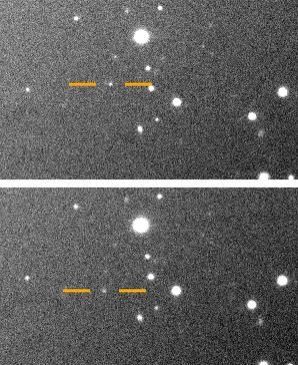Jupiter Moons: 12 New Satellites Found Orbiting Gas Giant, Including Tiny ‘Oddball’

In a surprise discovery, a team of researchers stumbled upon 12 more moons of Jupiter, the biggest and one of the most famous planets in our Solar System.
The find, which was made last year in March, takes the total number of natural satellites of the planet to a whopping 79 — more than any other planet in the neighborhood.
As the team behind the discovery — astronomers from Carnegie Institution for Science — described, the 12 moons were found by accident when they were using the Blanco 4-meter telescope in Chile in search for the hypothetical Planet Nine beyond Pluto.
They were peering through distant orbits beyond Pluto and the moons and found that Jupiter was also present in the sky region they targeted. “So, we were serendipitously able to look for new moons around Jupiter while at the same time looking for planets at the fringes of our Solar System," Scott S. Sheppard, the leader of the team, said in a statement.
After spotting the new previously unseen moons, they spent the ensuing one year to conduct follow-up observations to understand their size, orbital nature, and other dynamics.
The work revealed that nine of the 12 moons, ranging somewhere between one to three kilometers in diameter, orbit some 15.5 million miles away from the planet in three different groups. These are some of the most distant Jovian satellites and take some two years to circle around Jupiter, moving in a retrograde orbit or in the opposite direction of its spin.
Two of the remaining moons move with Jupiter’s spin (prograde orbit), much closer to the gas giant. They take less than a year to complete a single orbit and carry very similar orbital inclinations and distances — a fact that led the team to posit that they may have formed from a much larger moon which probably broke into pieces in the past.
This leaves the oddball, a moon that measures less than a kilometer across and follows a risky orbital path farther out from the inner prograde satellites. It moves in the same direction of Jupiter’s rotation but takes a route that crosses the path of the nine retrograde moons mentioned earlier. This means it is moving opposite to the moons in the same region, just like driving a vehicle in the wrong direction.
"This is an unstable situation," Sheppard added. "Head-on collisions would quickly break apart and grind the objects down to dust."
As another Jupiter moon Carpo also behaves in the same way, astronomers posit that this face-to-face movement could have triggered collisions between larger moons in the past and shaped the region around Jupiter into what we see today. In fact, the team thinks that this oddball prograde moon, which is now being called as Valetudo, could be one of the last remnants of a much larger prograde moon that collided with larger counterparts coming from the opposite direction. This likely formed some of the distant retrograde moons seen today.
The team has submitted its findings to the International Astronomical Union and is currently running simulations to determine how often a prograde moon would have collided with its retrograde counterpart.

© Copyright IBTimes 2024. All rights reserved.




















